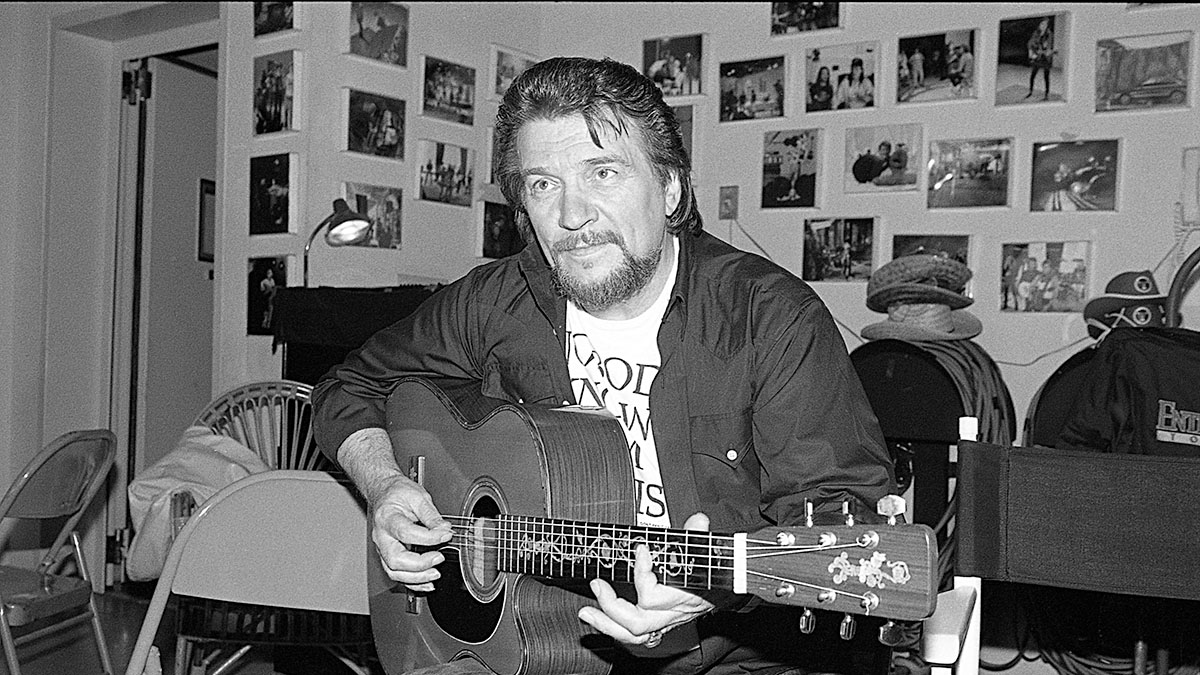
Waylon Jennings is widely considered to be one of the pioneers of the ‘outlaw country’ movement that developed in the 1970s.
In essence, this meant working outside the confines of the dominant Nashville sound that dictated country music, and resulted in a harder-edged sound influenced by country, honky tonk and rockabilly. Jennings was part of a scene that included Willie Nelson, Johnny Cash and Kris Kristofferson among others.
The main approach to outlaw country was to move away from Nashville’s sleek production, and ironically away from the sound of beloved producers like guitar legend Chet Atkins. Lyrical themes were darker and the music began to take on more of a rock influence as the genre developed.
Waylon Jennings had a fascinating history before he crossed over into the outlaw country sound, however. Leaving school at 16 he was determined to become a musician and as a young man he was hired by rock and roll legend Buddy Holly to play bass guitar.
If that wasn’t incredible enough, how about the fact that he gave up his seat on the plane that tragically crashed killing Holly, The Big Bopper and Ritchie Valens? Moving into the 1960s, Jennings formed a rockabilly band before pioneering his outlaw country sound from the early 1970s on.
Jennings was influenced by the rock and roll and country greats of the day, such as Elvis Presley, Hank Williams and Ernest Tubb. By age 14, he was regularly performing on local radio and by 16 he was a touring musician.
He spent some time writing and recording radio jingles then started working with Buddy Holly in 1959, which proved to be the gateway to him becoming an artist in his own right. His initial releases followed the commercial country sound of the time but a heavy touring schedule and personal difficulties helped him shape his own darker sound in the early 1970s.
Jennings performed and recorded on both acoustic and electric guitars, primarily his 1953 Fender Telecaster. His acoustic style was based more around accompaniment but features clever embellishments on simple chord patterns, usually with solid rhythmic strumming patterns.
This approach also leads to using slightly less common chord shapes and sounds, as you’ll see in this article – there’s nothing outlandish here but you will spot how simple open chords receive slight modifications to get that outlaw country sound in place.
While Jennings took care of strumming duties, latterly on record and live you are often hearing session ace Reggie Young (who played the intro on Son of a Preacher Man, Elvis’s Suspicious Minds and many others) taking care of the more complex licks, fills and solos.
Get the tone
Amp Settings: Gain 3, Bass 7, Middle 6, Treble 7, Reverb 2
Jennings used a variety of acoustic guitars but favourites included a 1946 Martin D-28, a 1943 Martin 000-21 and a later Martin D-35. A dreadnought is the classic body size for country strumming, but most body sizes will do a good job and Waylon himself sometimes used smaller-bodied instruments. I used a Martin Custom 1937 D-28 for this recording.
Example
[Bars 1-16] While this style is simple, there are nuances to country rhythm guitar that can provide unexpected challenges.
The principal element to focus on here is the alternating bassline; it’s crucial that you maintain this alternating pattern (root/5th/root) because the bass will generally outline this too and you don’t want to be at odds with the low-end. Keep the strumming loose and make sure that you are accurately striking the correct bass notes each time.
[Bars 17-32] Embellishing chords is a common device in country rhythm guitar and there are all manner of hammer-ons and pull-offs that are used within chord shapes to create these embellishments. In practice there are actually only so many options for this within common open chord shapes and when you have learned these patterns they become second nature.
Try isolating bar 19 where you embellish a C major chord. When you have learned this pattern, see if you can develop some alternative ideas; in general the embellishments are going to be easiest and most effective on the fourth and third strings in this chord shape.







